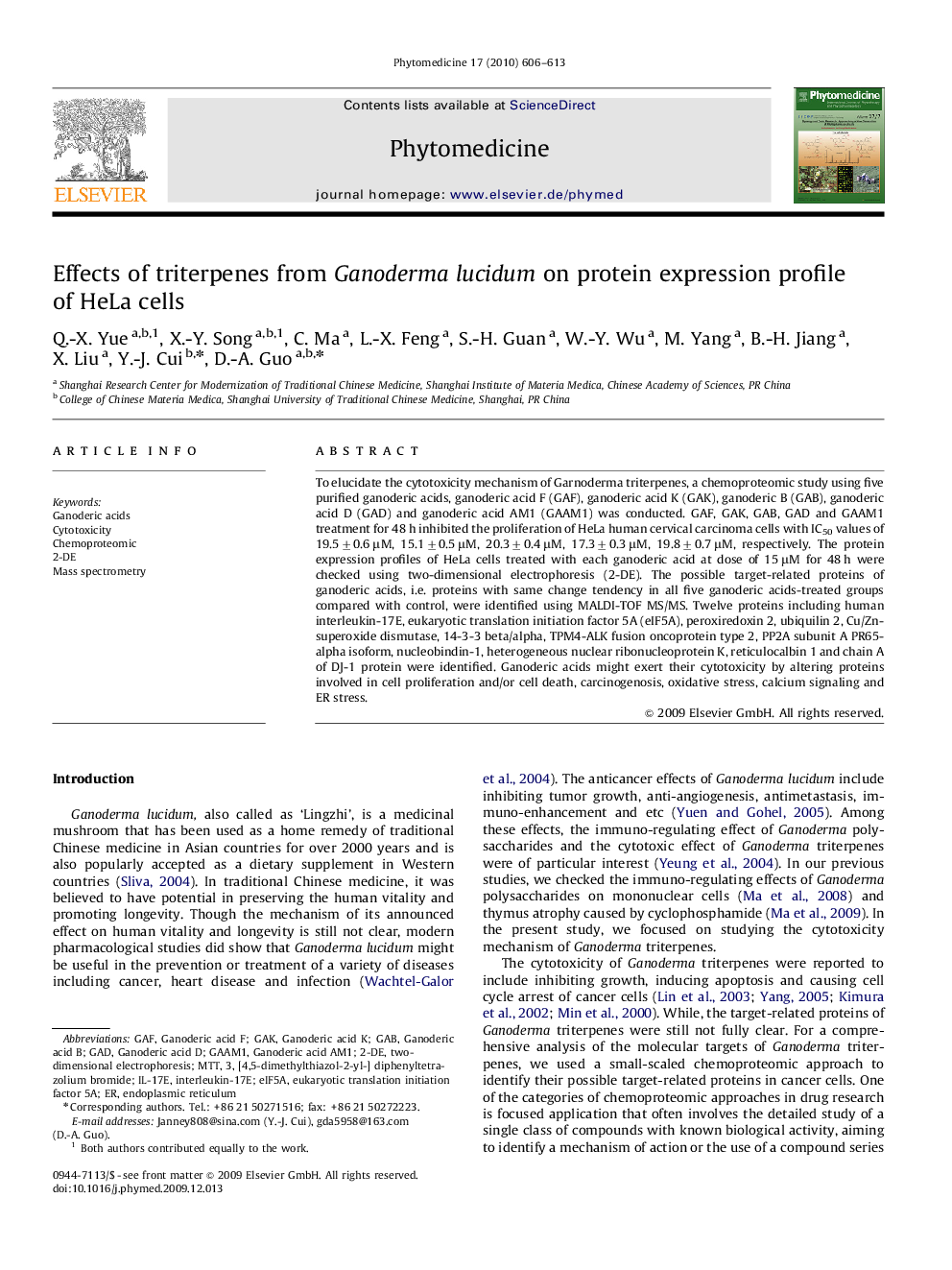| Article ID | Journal | Published Year | Pages | File Type |
|---|---|---|---|---|
| 2497213 | Phytomedicine | 2010 | 8 Pages |
To elucidate the cytotoxicity mechanism of Garnoderma triterpenes, a chemoproteomic study using five purified ganoderic acids, ganoderic acid F (GAF), ganoderic acid K (GAK), ganoderic B (GAB), ganoderic acid D (GAD) and ganoderic acid AM1 (GAAM1) was conducted. GAF, GAK, GAB, GAD and GAAM1 treatment for 48 h inhibited the proliferation of HeLa human cervical carcinoma cells with IC50 values of 19.5±0.6 μM, 15.1±0.5 μM, 20.3±0.4 μM, 17.3±0.3 μM, 19.8±0.7 μM, respectively. The protein expression profiles of HeLa cells treated with each ganoderic acid at dose of 15 μM for 48 h were checked using two-dimensional electrophoresis (2-DE). The possible target-related proteins of ganoderic acids, i.e. proteins with same change tendency in all five ganoderic acids-treated groups compared with control, were identified using MALDI-TOF MS/MS. Twelve proteins including human interleukin-17E, eukaryotic translation initiation factor 5A (eIF5A), peroxiredoxin 2, ubiquilin 2, Cu/Zn-superoxide dismutase, 14-3-3 beta/alpha, TPM4-ALK fusion oncoprotein type 2, PP2A subunit A PR65-alpha isoform, nucleobindin-1, heterogeneous nuclear ribonucleoprotein K, reticulocalbin 1 and chain A of DJ-1 protein were identified. Ganoderic acids might exert their cytotoxicity by altering proteins involved in cell proliferation and/or cell death, carcinogenosis, oxidative stress, calcium signaling and ER stress.
